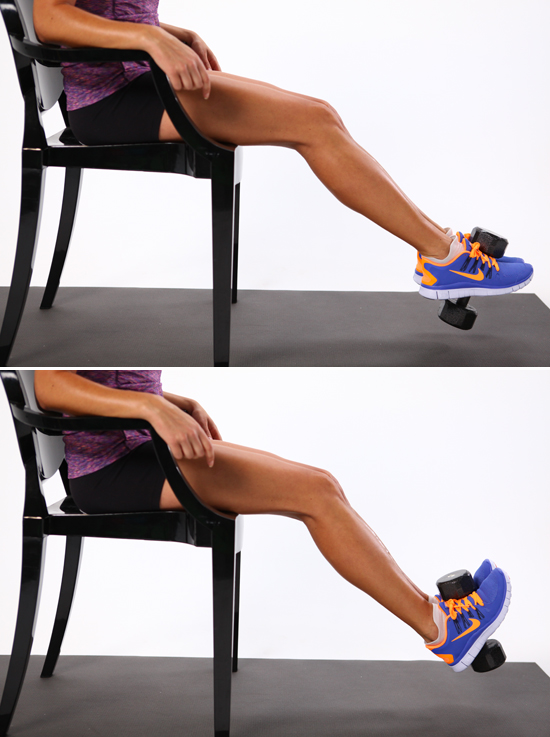Shin Splints/Half Marathon Training Advice!

mistylovesmusic
Posts: 147 Member
I am training for my first half marathon in the Spring. I started a 24 week half marathon training program a few weeks ago. Since then I have been having shin issues. I went to our local run/walk shop and got fitted for running shoes. I was told I had normal feet with no special arches etc. Even with the new shoes my shins are a wreck. What doesn't make sense is that they only hurt when I run and not every time.
Day 1- Old shoes no pain.
Day 2- Old shoes and almost had to crawl home.
Day 3- New shoes no pain
Day 4-New shoes no pain
Days 5 and 6- PAIN!!!
I can't decide if it's just muscle weakness or if it might be shin splints. Anybody ever had this happen? I am 30 pounds overweight at the moment. My current week is run 3 mins walk 2.
Day 1- Old shoes no pain.
Day 2- Old shoes and almost had to crawl home.
Day 3- New shoes no pain
Day 4-New shoes no pain
Days 5 and 6- PAIN!!!
I can't decide if it's just muscle weakness or if it might be shin splints. Anybody ever had this happen? I am 30 pounds overweight at the moment. My current week is run 3 mins walk 2.
0
Replies
-
Stretch and roll on foam roller after each run. I sometimes will stop mid run just to stretch and find that helps recovery. Ice your shins post run as well.0
-
Getting fitted is certainly better than not, but even that's not 100%. Do they have a return policy on the shoes since you're having problems with them?
It could also be a function of too much too fast.0 -
Stretch and roll on foam roller after each run. I sometimes will stop mid run just to stretch and find that helps recovery. Ice your shins post run as well.
^^^^ This!! Foam rollers have saved my muscles quite a bit when they act up. Groin muscle issues, hamstrings, ANYTHING, thank god for foam rollers. When I hurt my achilles, I used aleve or ibuprofen and iced my achilles tendon, waited an hour and then applied a heating pad and alternated. It helped to ease most of my pain and I feel like it sped up the healing process. Don't get in the habit of always using ibuprofen or aleve though because it can damage your body if you use to always get rid of the aches. I only use it when I'm in quite a bit of pain0 -
The two most likely culprits are (1) your running form and (2) too much too soon.
(1) make sure you are hitting the ground with a mid-foot strike - NOT with your heel and NOT with the ball of your foot (both of which can cause sore shins at best and shin splints at worst). It will feel awkward until you get used to it. If your running shop offers a running form clinic, go to it.
(2) when did you start running? Are your day #'s the days of the week? ie did you actually run 6 days in a 7 day period? If so, that is much too much, especially if you are new to running (which it sounds like you are fairly new, if you're still at run 3, walk 2). Beginner runners really should start out running only 3 or 4 days a week. This allows your body (muscles and joints) to get used to the mechanics and impact of running. The others days of the week should be spent cross-training (weight lifting, as well as non-impact cardio like biking or swimming), with at least one rest day.
When I first started running, I found I had best results with my running when I ran 3 days a week (M/W/F or Su/Tu/Th - NEVER back to back days), lifted twice a week for 30 minutes (non-running days), biked or swam 2-3 times a week (one or two days for 30 minutes after lifting, the other day 45-60 minutes), with one day of either active or complete rest (active rest being I did gardening or yard work, or maybe an easy walk or hike with the hubs, but nothing intense). I didn't add a fourth day of running until after I'd been consistently running 3x a week (3-4 miles) for like 10 weeks (added a "long" run - only 10-15 minutes more than my "short" runs that I'd been doing). I still haven't added my 5th day (speedwork) yet, although both my short and long runs are for longer distances/time...I should be starting that in the next couple of weeks, provided the weather allows me to keep my running at my current level.
hope that helps! 0
0 -
I agree too much too soon, you have to condition your body to handle all that stress you are putting on it. Not saying you can't do a half you can but you have to ease into it. Rest days are equally as important as training days.
Trust me I am learning the hard way. I have been running for about 5 years and ran to many days in a row last winter and have had to take most of this year off suffering from terrible foot pain.0 -
Excellent advice already given, so this is mostly duplicate.:
1. Check running form.
2. Don't run every day. Run 3 times a week if you're starting out. I'm still running only 3 days a week. Cross train the other days and take at least a day of rest a week.
3. Foam roll before or after every run.
4. You might look into compression sleeves or socks for your shins. A running partner of mine got them for her shin problems and they helped.0 -
I guess I should have clarified. I run 3 times a week with the program I'm on. Usually Wednesday, Friday, Sunday. What are foam rollers? I've never heard of them. The run shop recommended compression sleeves if the shoes didn't work. I feel like the shoes are good. Ugly as sin but they are extremely comfortable. The compression sleeves he had were top of the line an cost like $50.00. Does anyone know if the $15.00 ones at d*cks sporting goods are as good?
I really appreciate the advice! I've never been a runner but I really want to do this!0 -
I had another thought...again it's along the lines of "too much too soon" - it is HIGHLY possible that you are simply running too fast. Try slowing your pace down a bit, also...if you're running too fast for what your body can handle, one of the ways it will let you know that is sore shins
 0
0 -
Foam rollers are long (or short) tubes of hard foam you roll on for deep massage. They really help loosen tightness in your muscles and tendons (think, IT band), especially in the legs. I use them along with static stretching after my runs. Helps with soreness and joint relief.
Some say they are also good before a run because they help warm-up the muscle. My schedule doesn't allow for foam rolling before a run, so I do it after.
http://www.bodybuilding.com/exercises/finder/lookup/filter/equipment/id/14/equipment/foam-roll0 -
I've found compression sleeves really help - either for calves or shins
I also found some shin exercises online that seem to help
Could it possibly be your speed you're taking off at? Pushing too hard, too soon but not like others have meant...
I run with a buddy that's smaller and faster than me - we'd run together - same intervals but by the end - I'm beat and my body feels sore as if it's the first day!!
I decided one day that I would set the pace and crazy enough - it's really helped on the soreness and it's allowed me to continually up my distance. Maybe trying to go a bit slower during your RUN interval.
Also try to pay attention to how your foot strikes the the ground. I realized that when I paid attention and forced my foot to go in a 'rolling motion' it helps (heal to front of my toes)
Luck and congrats!0 -
As a long time runner who had trouble with shin splints in the past, I feel your pain. There are a few things you can do to help.
1) Ice your shins before and after the workout. This will help reduce inflammation and pain.
2) Stretch the surrounding muscles (calves, quads)
3) Strengthen the surrounding muscles (calves, quads)
4) Run on grass or another soft surface until they heal
5) Also try another brand of shoe. All shoes are made differently, even if they are the same "type." I was a long time Nike wearer, but finally switched to Asics and never looked back.
If you need any other tips or advice, feel free to email me at runnerdad@therunnerdad.com or check out my blog at http://therunnerdad.com.0 -
All great advice above. I banished shine splints by:
* putting icepacks on my shins after every run
* making sure my form was good. Shorten your stride so that your feet are always under you - if you can see your feet spriting out in front of you you are overstriding
* when I get shin pain, after a run I walk up and down barefoot, first of all on my heels, then my tip toes. Repeat up and down the room until the pain eases. It really does work and gently stretches your shins
* Plenty of stretching after every run0 -
When I was in the military, I was plagued by shin splints (which after a while can lead to micro-fractures of the bone)... You are either using the wrong shoes, not stretching your muscles prior to running, not getting enough magnesium, potassium, calcium and yes...sodium. Start small, then work up to it. Your goal should not be the distance you run, but how long you can run. 40 minutes should be enough for a beginner in decent shape (pace matching your ability). When you notice that when the front part of your feet start to make a "slapping sound" when running, you have done too much, slow your pace to a light jog, then a brisk walk until your heart rate is down and breathing normalizes, then quit for the day.
Continuing to run when you are in pain will cause long term damage, and you will eventually not be able to run again. The cliche "no pain, no gain" is the worst attitude to have. Pain is telling you that something is wrong and you need to address the problem. I will tell you that if it hurts, you will likely stop doing it (negative reinforcement kind of thing).
1. Get proper shoes (motion control type).
2. Get the proper nutrition (magnesium, potassium, calcium, and don't be a salt avoidance Nazi). Your cells need these nutrients to function properly.
3. If fitness is your goal, focus on time not distance. 40 minutes at a comfortable pace should be good to start with (if you are already in reasonable shape) Time running promotes endurance and allows you to run at a comfortable pace without injuring yourself. As your body adapts, greater times and faster running will happen.
4. When you begin to hurt, you have pushed yourself too hard and need to slack up a little. When your feet slap the ground, time to stop for the day. Jog then briskly walk to cool down. Stretch and rest.
Eventually endorphins will kick in and you will get that "runner's high" I know it happened to me, and I LOVED it.0 -
When I started running (3 years ago, after being off for about 5 years), I went through so much leg pain for the first week or two. After that I was fine.0
-
Can you link your training program? 24 weeks sounds really reasonable.0
-
A lot of good advice here but with the shoe/running store, when they fitted you with new shoes did they do a run analysis ? Did they have you run on a treadmill for 20 seconds or so and record your stride, foot-strike ? Usually they will replay the video in slo-mo and point out to you exactly what you are doing when you run....heel-striking, over/under pronation, etc. It can make a HUGE difference in type of shoe, and ultimately affect your running.
When I had mine done, we literally tested 4 or 5 different shoes, recording each run for replay. Took a while before the person helping me was satisfied with the shoes I needed for running. Might be something to look into.0 -
The two most likely culprits are (2) too much too soon.
It was this for me. I used to either play some kind of court sport or run once a week max and never experienced shin splints. Then I went to two 3 hour sessions a week. Holy Christ I learnt what shin splints were!! Anything from a dull ache to a stabbing pain leaving me limping around the court.
There are numerous exercises you can do to train the shins - here are a couple of my favourite:
-stand with your heels at the edge of a step, toes hanging off the edge, repeatedly raise your toes to try to touch your shins and then lower them
-sit with a light weight between your feet and do shin curls:
I wonder if any bodybuilders out there have massive shin muscles. :laugh:0 -
I never ran for years as i was always worried about my shin splints coming back i got when i was a teen, i then read up on them and even though id didn't think i had weak arches i got high arch support insoles and also a set of compression bandages for my shins (just get the cheap ones to try at first).
and with them both i could run again, i only now need the compression bandages if im doing alot of running or excessive walking on hard surfaces.0 -
I have had Shin Splint issues ever since running in the Military with Combat boots on, and I bought a small electric blanket and use it after a long run, shower and ready to sleep, using the heat for about an 1/2 hour really helps but you should check and see if you coming down on the heel of your foot to hard, (flat foot) and than a sneaker with heavy heel cushion also helps alot...
Hope it helps,0 -
I've been running for 20 years, and in that time, I've been through a lot of shoes. Not all shoes are created equal, and a shoe that rocks for someone else might not be right for you.
I've had good luck with NB, Asics and Brooks; but have had terrible luck with Nike and Saucony. I can't do heavily cushioned shoes but I do like a trainer with about a 6-8mm drop for distance. My shoes wear pretty evenly.
A cushioned shoe with a sizable drop - think 10mm or more - is going to feel fantastic in the store; but some of them promote a slapping effect that can cause shin splints. A cushioned 9 mm shoe will give me shin splints, but a firmer 9 mm might great for the distance. I don't like a 0 drop shoe for distance because I don't think they provide enough midfoot support, but they're great for a 5k.
Unfortunately, it may take some time to find your sweet spot.0
This discussion has been closed.
Categories
- All Categories
- 1.4M Health, Wellness and Goals
- 398.5K Introduce Yourself
- 44.7K Getting Started
- 261K Health and Weight Loss
- 176.4K Food and Nutrition
- 47.7K Recipes
- 233K Fitness and Exercise
- 462 Sleep, Mindfulness and Overall Wellness
- 6.5K Goal: Maintaining Weight
- 8.7K Goal: Gaining Weight and Body Building
- 153.5K Motivation and Support
- 8.4K Challenges
- 1.4K Debate Club
- 96.5K Chit-Chat
- 2.6K Fun and Games
- 4.8K MyFitnessPal Information
- 18 News and Announcements
- 21 MyFitnessPal Academy
- 1.5K Feature Suggestions and Ideas
- 3.2K MyFitnessPal Tech Support Questions















